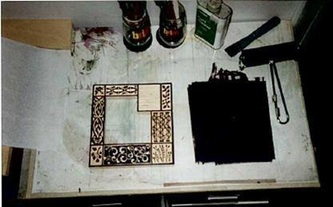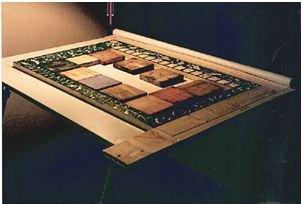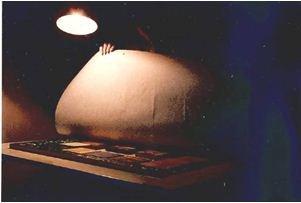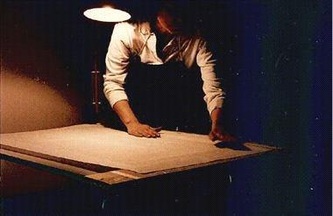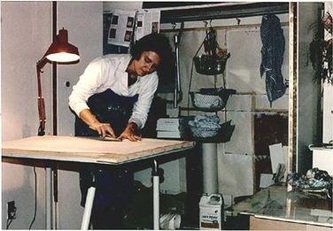Transferring Woodblock Images to Paper Using the Hand-Transfer Method
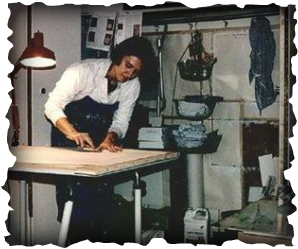
The most satisfying, though intensive process for transferring images from a woodblock to rice paper is the hand-transferring method. Using the back of a wooden spoon, every inch of the paper is gently rubbed across the carved block to carefully transfer the image to the paper. The process calls for steady and delicate contact to avoid damaging or wrinkling the paper. The woodcut transfer printing is my favorite printmaking technique. The process is deeply peaceful, and provides another dimension through which to connect to the art and what I am contemplating through the subject matter. I am drawn to the organic nature of the materials, from the wood to the textured handmade Japanese rice paper. When transferring my woodcuts to paper, not only is the carved image that I have created manifested on paper, but so is the wonderfully patterned wood grain.
The Hand Transferring Process Documented (From Left to Right)
The Hand Transferring Process Documented (From Left to Right)
- The woodblock is inked using a roller.
- A wooden guide frame (L-shaped) is used to position and hold in place the inked woodcut, so that when the rice paper is placed over it, the transferred image will “land” (generally centered) on the rice paper as calculated.
- The paper is attached with push pins to the wooden guide frame and temporarily suspended off the side until the inked block has been set into the L-shaped frame.
- The paper is lifted up, and gently laid across the inked woodcut.
- Once the rice paper is placed over the inked woodcut, pressure is gently applied throughout with the palm of one's hand to adhere the wet, inked surface to the carved block.
- The surface is then worked with a gentle rubbing motion of the back side of a wooden spoon ensuring to rub the entirely of the surface evenly throughout, and as such, transferring the woodcut image onto the rice paper.
